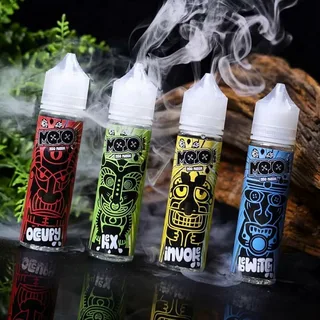E-cigarettes contain nicotine and other chemicals that are harmful to people. Nicotine is especially dangerous for young people and can harm their brain development. It also raises their blood pressure and narrows their arteries.
Some e-cigarette flavouring chemicals, such as diacetyl, can cause lung scarring called bronchiolitis obliterans (popcorn lung). Inhalation of these chemicals can also lead to other organ damage.
They are a form of smoking
E-cigarettes are a popular alternative to traditional cigarettes. They are cheaper, socially acceptable, and do not smell. However, they do contain nicotine, an addictive drug. Some brands advertise their products by featuring celebrities on their social media pages. These endorsements have a strong impact on young adults. One study showed that students viewed celebrity-endorsed e-cigarettes as more desirable than those without celebrities.
Despite the popularity of vaping, there are serious health concerns. The high temperatures needed to produce the mist for vaporizing can create many dangerous chemicals, including diacetyl (which has a buttery taste) and cinnemaldehyde, both of which are known to cause severe lung diseases. In addition, e-cigarettes can expose nonusers to nicotine and aerosol particles.
A recent study found that smokers who shifted to using e-cigarettes reported better health and social functioning than those who continued smoking. The study, which used data from the Seattle Social Development Project, followed participants through two points in adulthood: age 30 and 39.
They are a form of addiction
E-cigarettes heat a liquid to create an aerosol that users inhale. They contain nicotine, which is addictive, as well as flavorings and other chemicals. Some also produce a cloud of smoke that bystanders can inhale. The aerosol also contains harmful compounds like formaldehyde and acrylonitrile, which have been linked to cancer and other diseases.
Despite the risks of e-cigarettes, many young people use them. The leading reason given by youth and young adults is that the products come in flavors they enjoy. However, the flavored additives used in some e-cigarettes can have health consequences, including the buttery flavor diacetyl, which has been linked to severe lung disease, and the cinnamon taste of cinnemaldehyde, which may harm lung tissue.
E-cigarettes are often marketed in ways that appeal to young people, such as candy and food-related shapes and sizes. Some resemble regular cigarettes, cigars, and pipes; others look like pens, USB sticks, or other everyday items. They are also heavily promoted online through e-cigarette company-sponsored advertisements, and on social media sites like YouTube and Twitter.
They are a form of harm reduction
E-cigarettes can deliver nicotine at levels similar to or higher than those found in combustible cigarettes, but they also release potentially toxic chemicals. Furthermore, there is considerable variability in e-cigarette hardware and ingredients. This makes it hard to determine how much nicotine is actually being delivered. Moreover, some users supplement cigarette use with e-cigarettes or continue to smoke after switching to vaping.
Without the strict marketing restrictions of traditional cigarettes, e-cigarette manufacturers immediately turned their attention to attracting new users, particularly young people. For example, some e-liquids were marketed to look like common food items that appeal to youth, such as Thin Mints, Nilla wafers, and Warheads candy.
Physicians must recognize the harm reduction potential of e-cigarettes, but they should not endorse their use as a substitute for combustible tobacco products. They should instead encourage long-term studies of e-cigarettes and recognize that complete cessation is the goal for smokers. This will require education about the benefits of e-cigarettes for smoking cessation.
They are a form of marketing
E-cigarettes are marketed by social media influencers with large followings on apps like Instagram. These influencers are often paid to promote e-cigarette brands and encourage their followers to purchase the products. This marketing strategy can have negative health implications for adolescents.
Despite restrictions on traditional tobacco advertising, e-cigarette marketers have been using innovative marketing strategies to reach young audiences. Almost 4 out of 5 middle and high school students report exposure to e-cigarette advertising. The majority of the exposure was through social media and television. In addition to television and internet advertisements, e-cigarettes are promoted through billboards, point of sale, and radio ads.
The researchers used multilevel logistic regressions to assess associations between exposure to e-cigarette advertisements and outcomes. Outcomes included combustible cigarette use, current e-cigarette use, and intention to use e-cigarettes in the future. Models were adjusted for school type, sex, age, migration status, sensation seeking, socioeconomic status, and a brief measure of consumer susceptibility to interpersonal influence.電子煙









